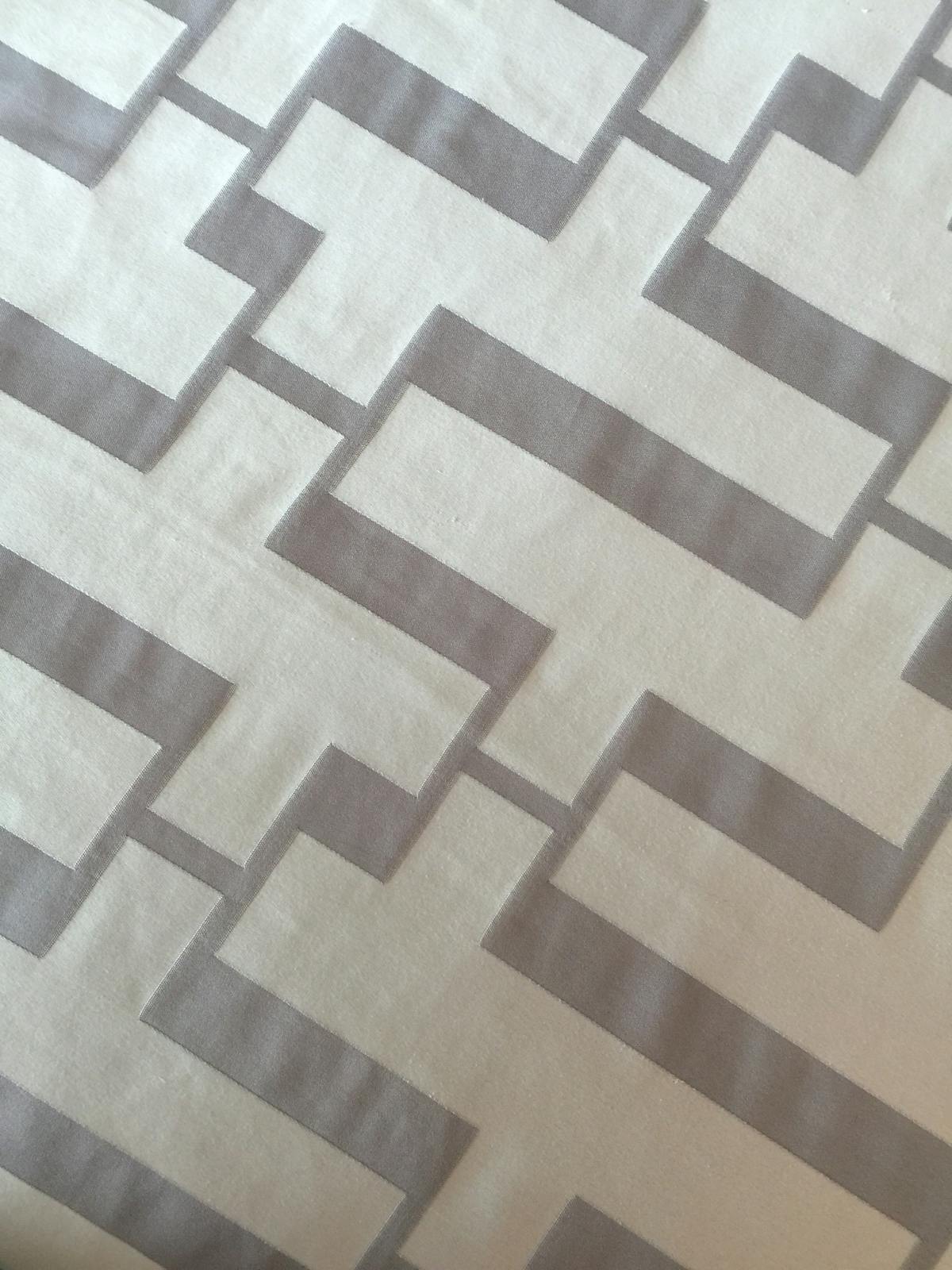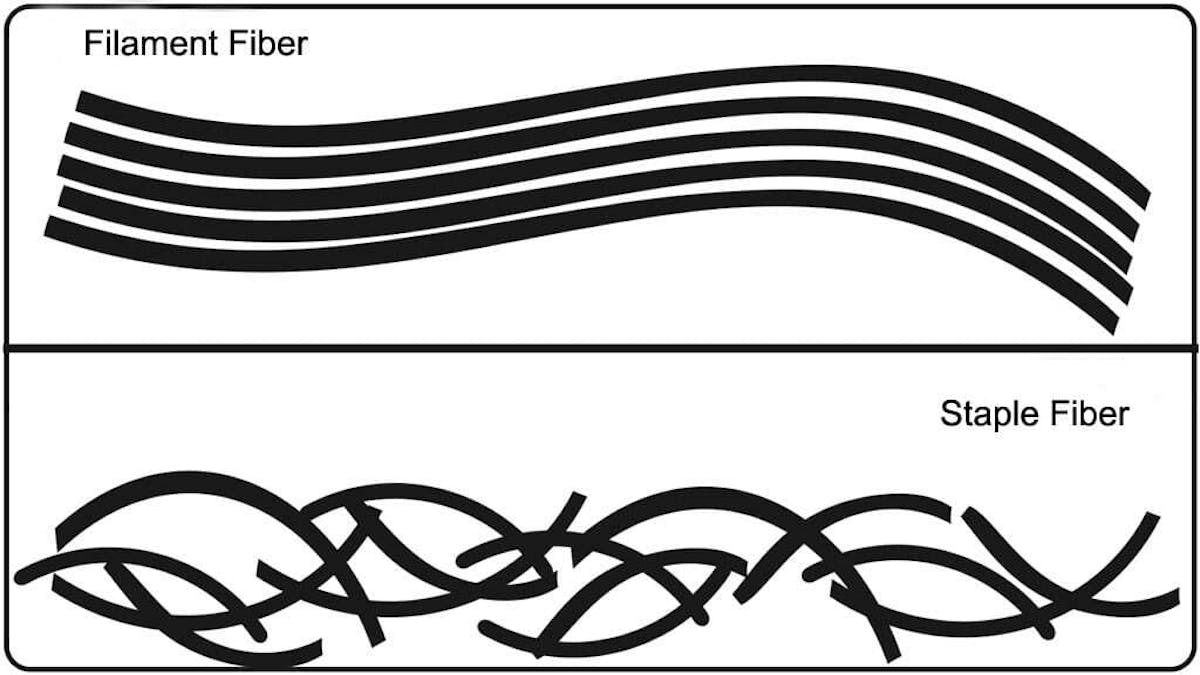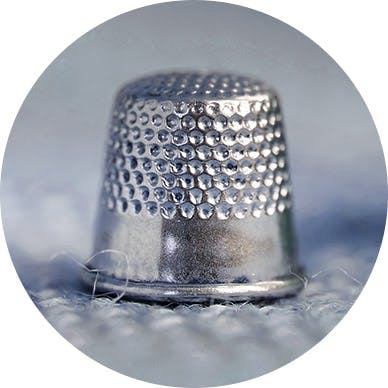As anyone who has ever been shopping for bed sheets can tell you, the difference between satin and sateen can be murky unless you are accustomed to working closely with the fabric. Has this ever happened to you? When many of us at Dutch Label Shop were newbies to the fabric game, we were struck by how close in feel and appearance the two were. If you are considering creating something with either of these, it's worthwhile to learn the difference between the two, particularly in terms of upkeep and durability.
So cozy up in your satin pajamas while you're laying luxuriously in your sateen sheets, and let's weave our way through the world of two very similar fabrics separated by something more than just a few letters.
The first thing to remember is that “satin” and “sateen” do not refer to the fiber; they refer to the weave of the fabric. The unique weaving pattern shared by both fabrics is four threads over and one thread under (as opposed to the traditional one over, one under that you might be accustomed to). This maximizes the visible threads on the top side of the fabric, giving it that trademark luxurious and elegant softness and shine. Likewise, the other side of the fabric has a dull appearance, establishing a decided “right side.”
Satin and Sateen
Two fabric both alike in dignity, in the fair Dutch Label Shop (or better yet, the fabric shop) where we lay our scene, where civil threads make civil bolts unique. There is a distinction in these two fabrics for sure, but the confusion is well-founded because they're both very similar, too.
It's important to remember once again that “satin” and “sateen” do not refer to the fabric; they refer to the finished product created by the weave of the fibers. The unique weaving pattern shared by both fabrics is four threads over and one thread under (as opposed to the traditional one over, one under that you might be accustomed to). The four threads over the one thread create a float or missing interface. This floating effect maximizes the visible threads on the top side of the fabric, giving it that trademark luxurious and elegant softness and shine. The flip side of satin and sateen also share a dull appearance, establishing a decided “right side.”
So, with the surface similarities, what exactly is the distinction? To figure that out, we're going to explore the two fabrics individually.
What Is Satin?

The name satin has its origins in the 12th century. During the Middle Ages, Quanzhou, China was a major port city trading in what we call satin. Arab merchants frequented the city, calling it Zayton, and began calling the fabric of the city by the same name. Eventually, "zayton" evolved into satin in English, and the rest is history... literally.
Satin is not only a type of fabric, but it's also a weave pattern. In fact, it's the name of the weave pattern shared by both satin and sateen. While satin and sateen both share a luxurious softness and shine, their distinction comes down to the use of different fibers.
What Is Satin Made Of?
Satin is made using filament fibers, such as silk, nylon, or polyester. Historically, satin was strictly made from silk, and some purists still believe that true satin can only be made of silk. For durability, maximum shine, and cost-effectiveness, satin is now not only made with just silk but also made from nylon or polyester – frequently a blend of all three. While satin made from synthetic fibers tends not to breathe as easily as natural silk, the effect of the fabric is very much the same.
What Is Sateen Made Of?

So, you might be wondering, if satin is defined by the fibers that make up its composition, what is sateen made of? While satin is made from filament fibers, sateen is made from short-staple spun yarns. Examples of short-staple spun yarns that are used to create sateen include cotton and rayon. Thanks in part to the satin weaving process, sateen can have that silk-like softness and shine while still being made of spun yarns. Typically, the cotton or rayon used is carded, combed, or mercerized to assist with the characteristic “silkiness.”
Sateen Meaning
Sateen is a fabric with a smooth, lustrous surface, similar to satin. It is made using a satin weave structure but typically from spun yarns like cotton. This gives it a softer feel compared to traditional satin, which is often made from filament fibers like silk.
Choosing Between Satin vs Sateen

Filament fibers are used for satin while staple fibers are used for sateen
Depending on your project, you might find that one serves the life of your project over another. Satin is very popularly used in garments – everything from baseball jackets to lingerie! If you have any little aspiring ballerinas in your inner circle, their dreamy pink pointe shoes will be covered in satin. It is also ideal for fine furniture upholstery. Satin is timeless elegance and soft luxuriousness.
Sateen, being made of cotton, is (as you might have guessed) a more durable and tough material. If you are sewing something that will require a little more wear and tear, this might be the way to go. This is the reason it is frequently used for things like bedding and draperies.
A significant difference in the upkeep of the two fabrics is that sateen is machine washable. Satin may be machine washable, depending on the blend of fibers, but frequently has to be dry-cleaned or hand-washed.
Finally, consider any color alterations you might wish to make to the fabric. Sateen can be bleached, dyed, or printed with great consistency. Satin can be dyed in some cases, but this will again depend on the blend, and requires a slightly more laborious process.
So that’s the skinny. Just remember, whichever fabric you end up using for your project, remember to label it with its care instructions so its new owners can enjoy the fabric as much as you do.













